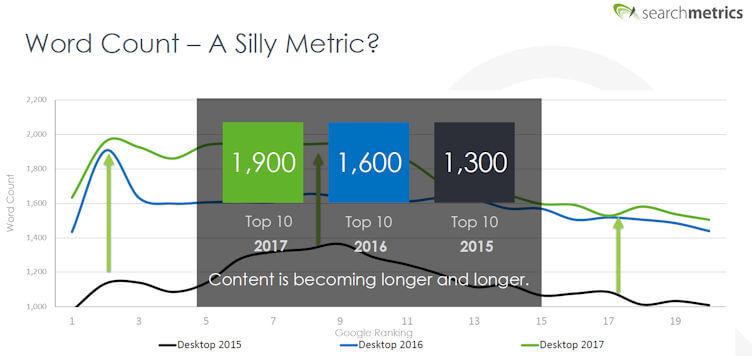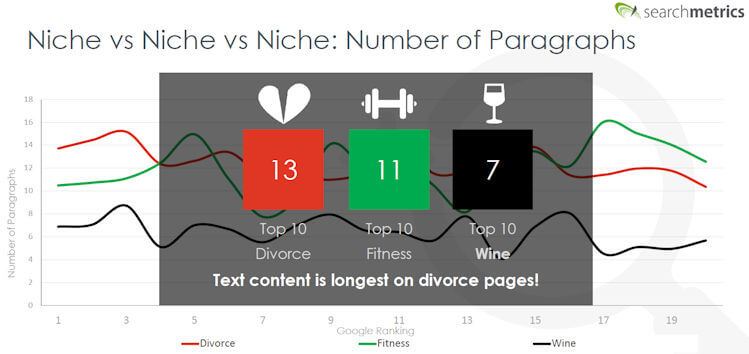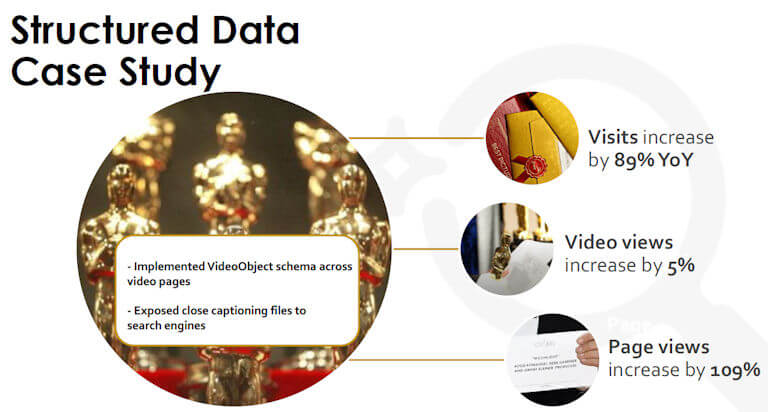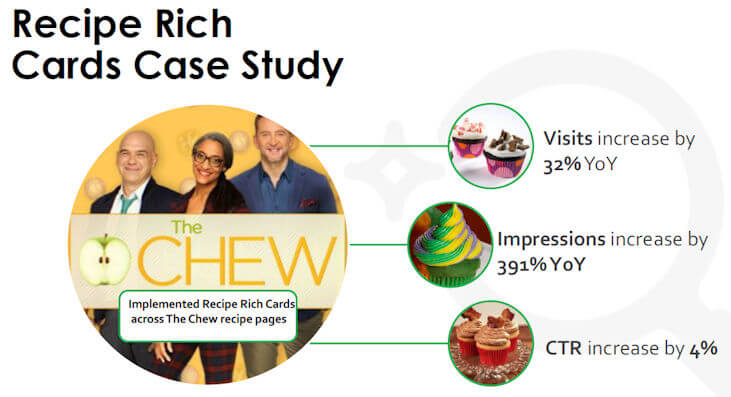 I attended the web optimization rating components session at this year's SMX West and enjoyed taking note of the panelists present their opinions, experiences and ideas.
I attended the web optimization rating components session at this year's SMX West and enjoyed taking note of the panelists present their opinions, experiences and ideas.

Any dialogue of rating factors raises lots of feelings and controversy, and this turned into no exception. it's critical to take note a way to use information from these types of sessions: not one of the records is utterly conclusive, and it's going to all the time be thinking about a grain of salt.
What it does tell us is the kinds of things that remember out there, not what components at once pressure rankings.
That said, our panelists shared some super insights, so let's dig in!
Olga Andrienko of SEMrushOlga became the primary to latest. She covered her company's contemporary rating elements study where they appeared on the suitable 100 positions across 600,000 key words and segregated these key words by way of competitiveness.
not like other rating components studies that depend on ordinary correlation measurements (e.g., Pearson or Spearman correlation measurements), SEMrush used a machine discovering model called Random forest.
here's a model in response to random dataset sampling to construct resolution timber. The method includes taking a few distinctive information samples, building fashions with that records and then averaging the consequences across all the samples.
This strategy may end up in a great deal stronger fits to the information in the practicing set however does carry with it some risk of "overfitting" the facts. The analyze checked out several on-page elements like links and traffic.
I'm going to pull the facets from Olga's talk I discovered most interesting.
the first commentary I'll highlight from the examine pertains to the use of key terms within the title tag. here is the slide from her deck:

As which you can see, the analyze reviews the keyword in the title in barely 35 percent of the pages they studied.
The chart additionally suggests the percentage is much greater for essentially the most competitive key words. be aware the yellow dotted link is over 60 p.c!
This follows what intuition would tell us: key terms in the title matter extra for aggressive phrases.
bear in mind this relates to the use of the exact keyword phrase in the title. Titles that use linked words, or makes use of all the words in a different order, will not exhibit as a suit.
The subsequent element I discovered exciting pertains to how key phrase-rich anchor textual content is used. here is the slide:

The massive element that emerges from this slide is how occasionally key phrase phrases are getting used in content material that ranks neatly, even for prime-quantity terms. There is some wonderful first rate news during this: It suggests link spamming on the net is down. As an trade, we should rejoice that. It additionally suggests ranking extremely may also be refrained from getting lots of rich anchor textual content hyperlinks to your web page.
although, which you can also infer getting keyword-wealthy anchor text to your web page can aid if you're attempting to get to the number 1 spot. just don't use that advice as a motivator to birth a spammy link campaign!
content material length is a further problem the study addressed, as proven right here:

even with all of the dialogue round making content material shorter for cellular, this records suggests longer content length helps with ranking. The study suggests the true three rating positions host longer content material.
in spite of the entire issues we hear about americans trying short, quick analyzing content material, it doesn't seem to be that's in reality the case.
The SEMrush examine additionally addressed the theme of page speed, finding greater-rating pages across the entire key phrases agencies loaded significantly faster than the lessen-ranking pages.
I discovered the chart on "time to first meaningful paint" in particular unique:

First meaningful Paint measures the time it takes for simple webpage content material to first appear on a clients screen. See how the statistics shows the rating curve favoring faster sites? The chart for time to first meaningful undertaking showed an identical effect.
This records doesn't suggest speed is an instantaneous ranking element, however other stories have shown americans like sooner-loading sites.
last but not least, I found the slide on hyperlinks rather interesting:

The facts supports the notion links nonetheless remember a fine deal in terms of settling on where a webpage ranks.
We also see the number two position has rather a large peak of hyperlinks throughout all keyword agencies. I'm nevertheless trying to decipher that one.
here is Olga Andrienko's presentation:
Marcus Tober of SearchmetricsMarcus concentrated on two issues:
For the primary element, I feel it's protected to say, a ranking analyze can do harm in case you follow or agree with the implications blindly.
just as a result of larger-ranking pages are quicker, it doesn't mean they power ranking. nonetheless it could be a strong indicator that having sooner pages is crucial to ranking neatly.
one of the most aspects he used as an example this become content size. identical to the SEMrush look at, Marcus stated longer content appears to rank stronger.
really, the size of content within the right 10 of the search engine rating pages (search engines like google and yahoo) seems to be going up over time:

during a whole lot of his presentation, Marcus reviewed how diverse market sectors vary. The sectors he checked out have been relationship, wine, recipes, furniture, motor vehicle tuning and divorce.
For his 2nd factor (the magnitude of performing rating analyses on an trade-with the aid of-industry basis), Marcus explored the function of microdata and the usage of it to examine relationship, recipes and divorce segments:

The recipes phase has the maximum utilization of microdata by far. That is not dazzling on account that Google means that you can mark up recipe content material with structured facts, which, in turn, offers rich consequences and improved search visibility.
yet another considered one of Marcus's facets focused on video:

I in fact like this aspect since it shows the way you need to tailor your content material according to the market you're in.
if you're within the health business, movies make lots of sense, but no longer so a whole lot for divorce or wine.
This highlights how studies may also now not all the time be focused on ranking elements however nonetheless share insights which present price.
one more enjoyable statement Marcus shared changed into about content material length throughout the divorce, fitness and furnishings markets:

note how content on divorce sites tends to be longer, whereas health is far in the back of. This indicates that the need for longer content varies with the aid of market.
individuals hunting for wine don't are looking to study, they wish to drink!
In distinction, although, when it involves images, Marcus compares the divorce, recipes and furnishings markets:

See how the furniture market is the clear leader here, which makes experience. if you're promoting furnishings, you should create a visible adventure with a lot of selections.
For recipes, visuals are critical, as americans wish to see what the food will appear to be. but in the divorce market, photos aren't essentially as valuable.
right here is Marcus Tober's presentation:
Chanelle Harbin, Disney/ABC television groupfinal, however no longer least, become Chanelle Harbin who shared a collection of real-world case reviews.
the first case analyze related to structured data. in this case look at, Chanelle and her group implemented VideoObject schema across video pages. They also exposed closed captioning to the search engines, with these results:

the size of increase of visits and web page views is unbelievable! here's also in keeping with what I actually have considered throughout other schema.org tests that I've participated in.
The American Broadcasting company (ABC) additionally measured the effects when they applied structured records pass recipe pages for the tv display "The chew." The consequences right here have been additionally excellent:

i'm a strong proponent of the cost of featured snippets. Chanelle shared some excellent facts from what they saw once they bought a featured snippet for the phrase "Beyoncé guacamole recipe":

Now, that's a major uptick in site visitors!
ABC also participated in some first rate historical-common link building. here are some of the key moves they took:
These are all very fundamental practices that any website can tackle, and the effects that ABC acquired have been stellar. here are a few examples:

remaining, however not least ABC ran exams to compare the efficiency of non-AMP pages with accelerated mobile pages (AMP). listed here are the person engagement effects they noticed from these checks:

listed here are the improvements in site visitors:

bear in mind that AMP isn't a ranking factor, however as ABC is a information site, participation in AMP made them eligible for the AMP information carousel on smartphone contraptions.
It's been advised that Google might also let non-AMP pages appear within the smartphone information carousel and appropriate reports on computer in the future. despite the fact that that does happen, the person engagement benefits ABC got will remain in area.
right here is Chanelle Harbin's full presentation:
abstractThis changed into a superb session. bear in mind not everything shared is a rating factor, however's all decent advice you could use to your site and enterprise.
Opinions expressed in this article are those of the visitor author and not always Search Engine Land. personnel authors are listed right here.



0 comments: